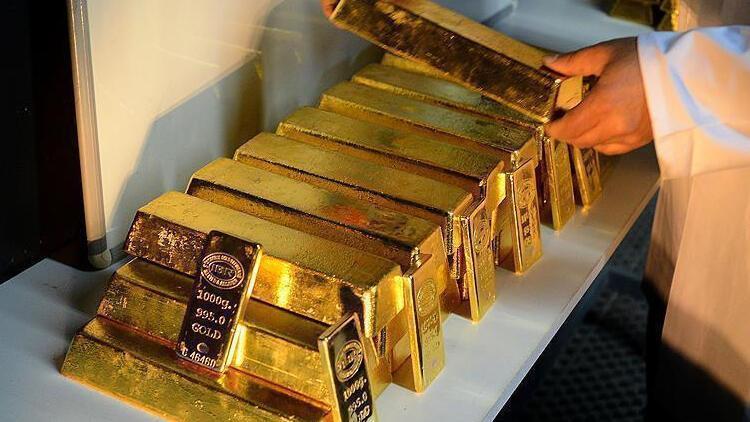
With technological developments in searching for new gold fields, Turkey is aiming at producing 100 tons of gold annually in five years, Energy and Natural Resources Minister Fatih Dönmez has said.
“We have X-rayed all around Turkey with geophysical aerial imaging that started in 2017 and finished in 2018. The nationwide study has been concluded now. We have been conducting 1 million meters of drilling [for gold] on average every year since then,” he said in a written statement on Sept. 12.
Some new gold reserves have already been found and turned to a mine field, he added.
Turkey’s yearly gold production hit a record of 38 tons in 2019, according to the Energy and Natural Resources
Ministry data.
“God willing, we will reach a target of producing 44 tons of gold this year despite the effects of the [coronavirus] pandemic. In the following five years, we will double this level to produce 100 tons of gold annually,” said Dönmez.
Turkey has imported about 150 tons of gold annually in recent years. The country’s gold import bill was $12.5 billion last year, while processed gold worth $7 billion was exported. In the first half of 2020, $11.5 billion of gold was imported and gold exports stood at $3 billion.
Turkey’s current account balance registered a deficit of $1.8 billion in July, bringing 12-month rolling deficit to $14.9 billion, the Turkish Central Bank said on Sept. 11.
The figure deteriorated from a $1.9 billion surplus in July 2019 and down from $2.9 billion this June, the bank said.
Bank data showed that gold and energy excluded current account posted $2.1 billion surplus, compared to $5.3 billion surplus in July 2019.
In July, the bank’s gold reserves - including gold deposits and, if appropriate, gold swapped - hit $43.6, climbing 11.5 percent from a month earlier.
“We need to extract the gold that exists in our land, just like United States, Canada, Australia and other countries do.
Whatever procedures the developed countries are implementing for the extraction of gold, we adopt the same procedures as Turkey,” Sönmez said.
There are strict inspections of the Environment and Urbanization Ministry, the Agriculture and Forestry Ministry and the Energy and Natural Resources Ministry in mining activities, he added.
Lithium production to start this year
Turkey will commence producing lithium for the first time at the end of the year, according to the energy minister’s remarks.
Eti Maden, the state-owned mining and chemicals company focusing on boron products, has established a facility in the Central Anatolian province of Eskişehir to extract lithium from boron wastes.
The initial annual lithium production target of Eti Maden is 10 tons, which will be expanded to 500 tons in a couple of years, said Dönmez.
Turkey owns over 70 percent of the world’s boron reserves and Eti Maden is the leading producer and exporter of borate minerals by far.
Demand for lithium has soared in the last two decades years as it is used in batteries of electric cars and electronic devices.
On Sept. 3, the European Commission added battery element lithium to its critical raw materials list and set out a plan to guarantee their supply to support a green recovery.
Europe would need up to 18 times more lithium by 2030 and 60 times more by 2050, Commission Vice President Maros Sefcovic said in a statement.
The EU relies now for much supply on China, Turkey, South Africa and, in some cases, single companies.
Chile’s state-owned copper commission, CoChilco, said last month that demand for lithium for electric vehicles had been muted this year because of the coronavirus pandemic, expected at around 75,000 tons, but would surge to 1.4 million tons by 2030.
Chile, Bolivia and Argentina, which are called as the lithium triangle, are the top producers of the element.
Cochilco foresaw Australia and Chile maintaining by slimmer margins their leads in production, with growing competition from the United States and Argentina reducing Australia’s global supply from 48 percent today to 31 percent by 2030, and Chile’s from 29 to 17 percent.